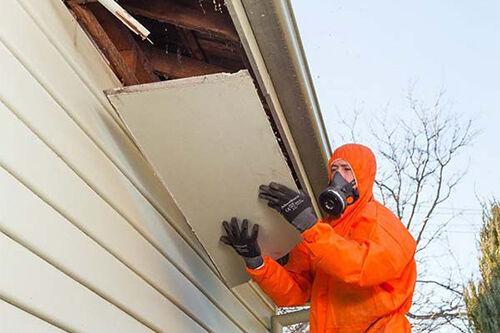Asbestos Removal
If your asbestos material is intact or encapsulated, why should you still consider removal?
The biggest risk is fire or flood. Depending on the intensity of the fire, asbestos material may explode. This will compromise the integrity of the product and may result in asbestos fibres becoming airborne. Similarly, flooding causes degradation of the asbestos product making it particularly dangerous when it dries out. Potentially, the material may become friable, i.e. can be pulverised by hand pressure, and could result in asbestos fibres becoming airborne. This can pose an immediate threat to anyone in the immediate area, and possibly contamination of nearby structures/property. On top of the health risks, the financial cost of post damage clean-up is often not fully covered by property insurance.
Residential Asbestos Removal – Houses built prior to 1990
Asbestos is a construction product that was used extensively in the industry between the 1930’s and 1980’s. With over 3000 products containing asbestos fibres being manufactured during this time, there is a good chance that your home will contain some asbestos material. Although this fact can be quite concerning for many, don’t panic! When the product is intact, it does not pose an immediate threat to you or your family’s health. However, it is still advisable to remove these products as soon as practical
Commercial Asbestos Removal – Commercial Buildings built prior to 1990
As a commercial property owner, you are responsible for the management of asbestos in your building. Legally, you must have an asbestos audit conducted to identify all known, or assumed, asbestos material and maintain this information in an asbestos register. Furthermore, if you are an employer, you have an obligation to maintain an asbestos management plan and reduce or eliminate the risk of airborne asbestos fibres exposure to anyone in your workplace.

